Resection With End-to-end Anastomosis for Aortic Coarctation treatment in Germany
Treatment prices are regulated by national law of the corresponding countries, but can also include additional hospital coefficients. In order to receive the individual cost calculation, please send us the request and medical records.
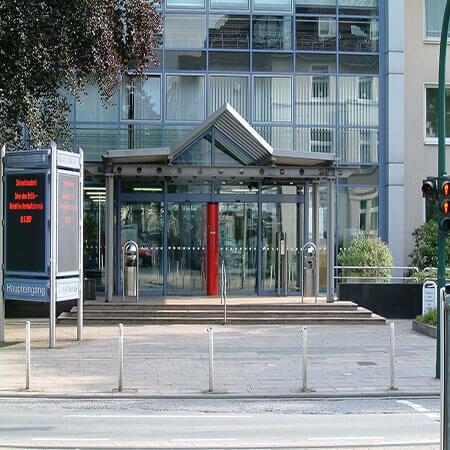
Department of Cardiothoracic Surgery
According to the Focus magazine, the Department of Cardiothoracic Surgery ranks among the top German medical facilities specializing in the surgical treatment of diseases of the cardiovascular system and lung cancer! The department offers the full range of surgical services for the treatment of diseases of the cardiovascular system, respiratory tract, including heart and lung transplantation, artificial heart implantation. The therapeutic options include aortic surgery, coronary artery bypass grafting, transplantation surgery, surgical treatment of heart rhythm disorders (arrhythmias), minimally invasive surgery, surgical treatment of the heart valves, including reconstructive interventions. All operations are performed using state-of-the-art technology and in accordance with the current recommendations of professional societies.
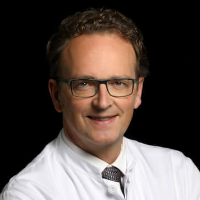

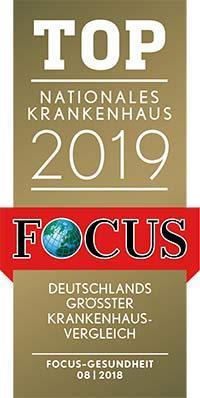
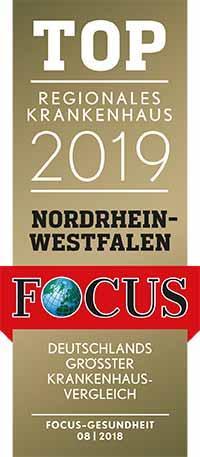

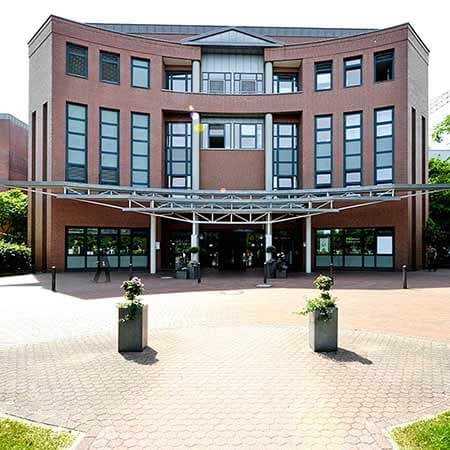
Department of Cardiac Surgery
The Department of Cardiac Surgery provides a full range of surgical treatment in its area of specialization. Special emphasis is placed on heart valve repair and replacement surgery, coronary artery bypass grafting, thoracic aortic surgery, adult congenital and acquired heart disease surgery, pacemaker and defibrillator implantation, and artificial heart implantation for severe heart failure. Many heart operations are performed using minimally invasive techniques, which has a positive effect on the healing of the surgical wound. Minimally invasive cardiac procedures also reduce surgical risks and contribute to a rapid recovery of the patient in the postoperative period. Surgical treatment of cardiac pathologies is performed in advanced operating rooms equipped with the latest technology. The cardiac surgeons of the department successfully perform routine and complex surgical procedures, saving the lives of thousands of patients. The specialists work in accordance with current clinical protocols and follow the recommendations of the German Society for Thoracic and Cardiovascular Surgery (DGTHG).
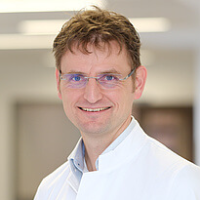

Department of Cardiothoracic Surgery and Vascular Surgery
The Department of Cardiothoracic Surgery and Vascular Surgery provides effective surgical treatment for diseases of the heart, respiratory system, and blood vessels. The team of cardiac surgeons operates on patients with heart valve pathologies, coronary heart disease, heart failure, and heart rhythm disturbances. In the field of thoracic surgery, the key focus is on the surgical removal of lung tumors and lung metastases. The specialists in this area also perform surgery to repair chest wall deformities. In the field of vascular surgery, interventions for abdominal and thoracic aortic aneurysms are most often performed here. The department's vascular surgeons are also exceptionally competent in the treatment of peripheral occlusive arterial disease. A great advantage for the department's patients is that almost all surgical interventions are performed using minimally invasive techniques, so there is no need for a long postoperative recovery. The department's operating rooms are equipped with state-of-the-art technology. This allows for effective and safe treatment. The priority is always personalized medical care for patients.
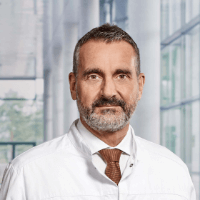




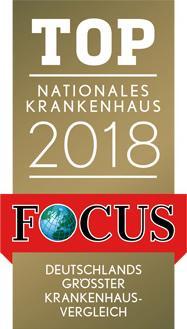
Aortic coarctation is one of the most common heart defects, accounting for up to 7% of all cases. Many treatment methods for this disease have been developed. Historically, the first, and still commonly used, method is coarctation resection with end-to-end anastomosis. This surgical treatment option is primarily used in children, including newborns. To avoid exposing the child to unnecessary risks, you can opt to undergo this surgery in Germany. Even the most complex types of heart disease are successfully eliminated in this country. You are welcome to use the Booking Health service to find out the cost of treatment in Germany and get services for organizing your trip abroad.
Content
- What is aortic coarctation?
- The essence of the treatment method for aortic coarctation
- Who may be a candidate for resection with end-to-end anastomosis for aortic coarctation?
- How is surgery for aortic coarctation performed?
- Why to undergo your surgical treatment for aortic coarctation in Germany?
What is aortic coarctation?
Coarctation of the aorta is a localized narrowing of a blood vessel, usually of small extent. This can be located in any part of the thoracic or abdominal aorta, but most patients have it localized in the area of the arterial duct. Its tissue, which grows to close the duct shortly after birth, is thought to be the cause of the narrowing of the aorta.
Coarctation of the aorta is often combined with aortic arch hypoplasia (underdevelopment). The condition can also be combined with hypoplastic left heart syndrome or congenital mitral and aortic stenosis.
In newborns with coarctation of the aorta, poor feeding, insufficient weight gain, and physical developmental delays are noted. Doctors listen to heart murmurs, and a weak pulsation is noted on the blood vessels of the legs. Over time, hemodynamics may improve due to the formation of coronary collaterals, which are blood flow pathways that bypass the narrowed area. This blood supply is, however, not enough to fully compensate for hemodynamics. The lower part of the patient's body lags behind in development compared to the upper. In the third or fourth decade of life, severe complications may develop, such as severe arterial hypertension, ventricular dysfunction, aortic aneurysms or dissections, and coronary heart disease.
The essence of the treatment method for aortic coarctation
There is a narrowed area in the aorta. This fragment of the aorta can be removed and the ends sutured. This technique is called end-to-end anastomosis. It is the simplest and, at the same time, very effective, especially in newborns.
End-to-end anastomosis is historically the first procedure to repair aortic coarctation. Today, it remains the main method of surgical treatment for heart disease in newborns, as it provides a low risk of recurrent coarctation of the aorta.
Coarctation of the aorta is one of the first heart defects that doctors learned to eliminate. The first successful operation was performed in Sweden. This was completed by Crafoord in 1944. After 9 years, doctors successfully operated on the baby for the first time. Surgeons applied a simple circular anastomosis. The problem with the first operations was the high rate of recurrence of the disease.
In 1977, the technique of the operation was improved. Amato proposed a technique called extended anastomosis. Following this, a modification of the operation appeared in 1987, which was proposed by Elliott, calling it a radically extended anastomosis.
Who may be a candidate for resection with end-to-end anastomosis for aortic coarctation?
Resection with end-to-end anastomosis for aortic coarctation is used in newborns and is their method of first choice. It is much more complicated to perform this surgery in adult patients because the aortic wall is sclerotic, often with calcification (deposition of calcium salts). The sutures erupt even under slight tension.
Therefore, the younger the patient, the more likely they are to be treated with end-to-end anastomosis. The older the person, the less often this technique is used, but sometimes it can be used in adolescents and adults.
How is surgery for aortic coarctation performed?
The operation is performed through a chest incision in the fourth intercostal space. Doctors remove part of the aorta and suture the ends together to keep the blood vessel intact. The aorta is clamped, but the patency of the subclavian artery is maintained to ensure collateral blood flow. The surgical intervention is performed using a heart-lung machine.
End-to-end anastomosis can be performed when the edges of the aorta diverge after removal of its section by no more than 3-4 cm, although in children, some doctors apply an anastomosis even with a divergence of up to 5 cm due to the mobilization of the aortic arch and subclavian artery. The anastomosis must be expanded using various surgical techniques to fit the normal aortic diameter. The anterior wall of the anastomosis is usually sutured with a U-shaped suture and the posterior wall with a blanket suture.
The advantage of the surgical treatment of coarctation is its physiology. The pathological segment of the aorta is completely removed during the surgery. As a result, the tissues no longer grow, and recurrent coarctation occurs very rarely. The anastomosis may grow with the child, though in some children, the aorta in the operated area may become narrower than the adjacent sections of the blood vessel.
Why to undergo your surgical treatment for aortic coarctation in Germany?
Doctors at German hospitals perform the surgical repair of aortic coarctation efficiently and safely. It is best to travel to Germany to ensure good long-term results, a low risk of complications, and the avoidance of future revision surgery. Treatment at German hospitals has the following benefits:
- state-of-the-art equipment;
- highly qualified cardiac surgeons with high authority far beyond the borders of Germany;
- new modifications of operations for surgical repair of aortic coarctation;
- successful interventions in patients of any age, including newborns and premature babies weighing less than 2 kg;
- even complex operations in the case of a significant extension of the coarctation area, aortic arch hypoplasia, or hypoplastic left heart syndrome are effective;
- if a patient has additional heart defects, these can be simultaneously eliminated in patients weighing more than 1.5 kg;
- restoration of coarctation of the aorta with a minimal risk of complications;
- high-quality postoperative care for patients and full rehabilitation.
You are welcome to use the Booking Health service to find out the cost of treatment in Germany, compare prices at different German hospitals, and make your treatment appointment at the best price. When you make your appointment through Booking Health, the cost of treatment in Germany will be lower for you than if you contact a German hospital directly. The price is reduced due to the lack of additional taxes for foreign patients. The initial cost of treatment in Germany will not increase for you, even if there is a need for additional procedures, as your insurance will cover the extra costs.
The Booking Health specialists will take care of all the arrangements for your trip to the German hospital. We will select a hospital that specializes in the surgical treatment of coarctation of the aorta and whose doctors perform resection with end-to-end anastomosis with the best results. Our company's employees will contact the hospital administration and schedule an appointment for your preferred dates. They will also book a room in the nearest hotel, purchase airline tickets, and translate your medical documents. Our company's employees will meet you at the airport and take you to the hospital by car. After the completion of your surgical treatment and recovery, they will take care of a return transfer from the hospital to the airport.
Authors:
The article was edited by medical experts, board-certified doctors Dr. Nadezhda Ivanisova and Dr. Vadim Zhiliuk. For the treatment of the conditions referred to in the article, you must consult a doctor; the information in the article is not intended for self-medication!
Sources:
European Society of Cardiology

